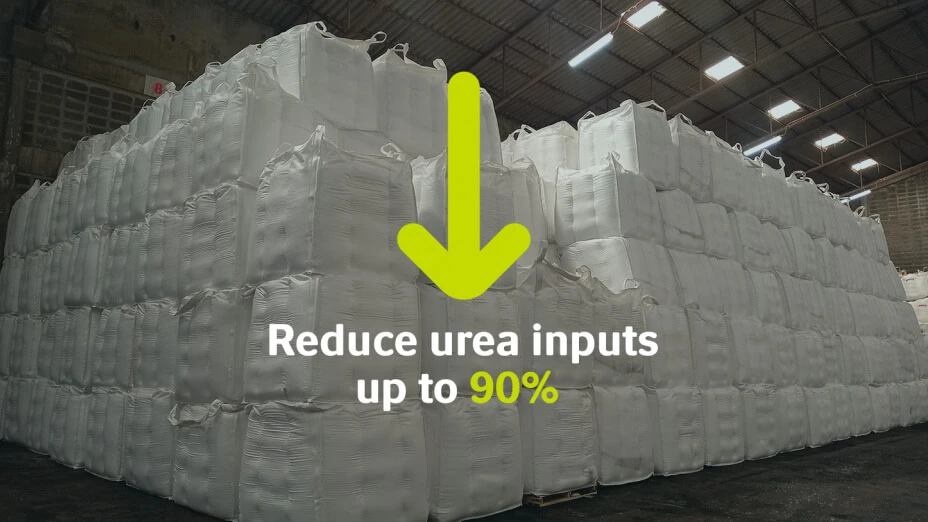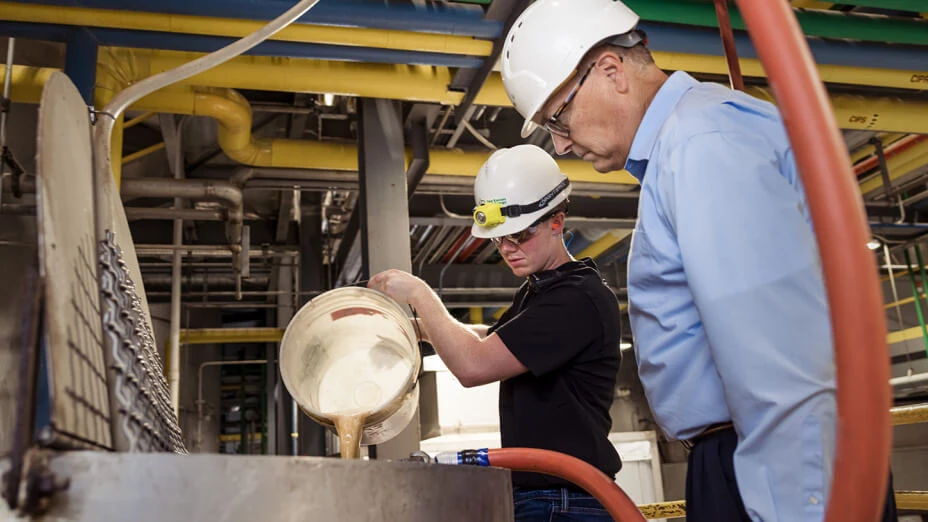Is using urea holding back your ethanol plant?
As an ethanol producer, you’re continually improving your process – both to meet shareholder demands in the short term and for long-term business sustainability

And yet, in a market as dynamic as the ethanol industry, those decisions and improvements need to be revisited periodically. Take, for instance, what many view as a staple of the production process: urea.
Urea has historically been inexpensive, making it a cost-efficient nutrient for yeast. Not only that, but it was also relatively easy to manage: Just build processes and systems to handle the bags and super sacks, then add the urea as needed to enable your fermentations to run as effectively as possible.
But is it still giving you a competitive advantage? And what’s more, was it ever an ideal solution in the first place – or simply a necessary evil?
The suboptimal realities of urea as a nitrogen source
Urea prices recently hit a record high, driven by limited supply and the high price of natural gas. Now, experts say these elevated urea prices could be the new normal, thanks to world events playing havoc with global chemical supply chains.
Meanwhile, urea can hamper fermentation performance by reducing both operational efficiency and production yields, including ethanol and starch. And, in plants where urea is the sole nitrogen source, higher corn oil yields go untapped. This leaves you unable to make the most of corn oil’s all-time-record high prices driven by renewable diesel market demand.
The dream, of course, would be to tell your shareholders and board of directors that you’ve found a way to increase your corn oil and ethanol yields with the same level of corn investment. But what if you could do just that – all while lowering urea inputs by up to 90% and reducing the demands on your operations team?
One way to achieve these results and optimize your fermentation is to use a combination of biological solutions which feed and activate your fermentations with the most desired nutrients – advanced yeast and liquefaction proteases. To understand why these are superior to urea, let’s take a closer look at the science behind the technologies and their effect on your process.
Book a free consultation with our technical expert today
The fundamentals: nitrogen and yeast nutrition
Nitrogen is a critical component of yeast life and cellular functionality, and many factors – from the source of the nitrogen to how it is dosed – will affect yeast performance. Nitrogen enables yeast cells to produce amino acids, the building blocks for proteins, including enzymes. These yeast proteins contribute to critical cellular functionality such as growth and metabolism, including ethanol production.
A range of issues arise when yeast are not given appropriate amounts of nitrogen. On one end of the spectrum, the yeast simply do not perform because they are devoting all their energy just to maintain basic life function, with nothing left for peak performance. Suboptimal levels of nitrogen for the yeast results in lower ethanol yield, starch passed on to DDGS, and premature cell death.
Additionally, if suboptimal nitrogen sources are used, the yeast may become stressed and unable to handle even minor fermentation challenges such as elevated fermentation temperatures and pH changes. The energy normally diverted to growth, metabolism, and stress management is now required to breakdown nitrogen sources into usable forms for the yeast. As an example: If you personally needed to convert a live steer to a steak cooked and ready on your plate it would require significant energy versus a protein shake that’s been prepared for you – it's ready and easy to consume, and easily digested by your body to put to work.
Bacteria present in large scale fermentations also respond to nitrogen. Providing too much or too little nitrogen can both result in infections, therefore it becomes critical to achieve the right balance with proper fermentation monitoring.
So how does yeast obtain nitrogen from the fermentation environment, and why does it matter what the source is?

Yeast and protease: the most efficient path to nitrogen utilization
Yeast typically metabolize three different sources to obtain nitrogen: urea, amino acids, and ammonia.
When yeast metabolize urea, they need to use ATP – an energy-containing molecule found in all life forms – to first convert the urea into ammonia, which is a nitrogen source for amino acid synthesis. In other words: Urea requires energy to create energy.
Yeast can much more easily obtain nitrogen from amino acids and ammonia, since those sources don’t require an extra step. That’s where advanced yeasts and liquefaction proteases can bring your plant additional value.
Liquefaction proteases break down corn protein into small peptides and amino acids, which are easily utilized by the yeast. This means the yeast has more energy to thrive, enabling them to quickly start up, which helps them avoid bacterial infections and reach peak performance potential. Meanwhile, advanced yeasts, such as the Novozymes Innova® yeast family, are significantly more efficient at using the available amino nitrogen provided by the liquefaction proteases.
Combined, the use of these two biotechnologies enables ethanol plants to get more from every corn kernel and reduce urea inputs by up to 90%.

Optimizing your process with the right biotechnology
Choosing the right yeast and protease can affect several outputs of your process, including both ethanol and corn oil yield as well as DDGS protein levels.
Thermostable liquefaction proteases, available in the Novozymes Fortiva®family of products, deliver the highest corn oil yields possible, while also efficiently feeding yeast to improve fermentation performance and reduce expensive urea costs. In fact, compared to a non-protease baseline, producers can expect to see up to 10-15% more corn oil with Fortiva®.
Instead of adding urea to the process, a liquefaction protease provides multi-functionality, unlocking the corn kernel’s own nitrogen for yeast nutrition enabling higher ethanol production and releasing more corn oil – products which bring you greater revenue and profitability.
The advanced yeast you choose is the final piece of the puzzle. Since Innova® yeasts are exceptionally efficient and naturally robust, they devote more energy toward your fermentation yield. These yeasts are proven to have superior nitrogen utilization and performance. And since Innova® yeast strains are designed for their specific purpose, as opposed to a one-size-fits-all approach, they enable true optimization for your unique process conditions and operational needs when paired with Fortiva® liquefaction proteases.


